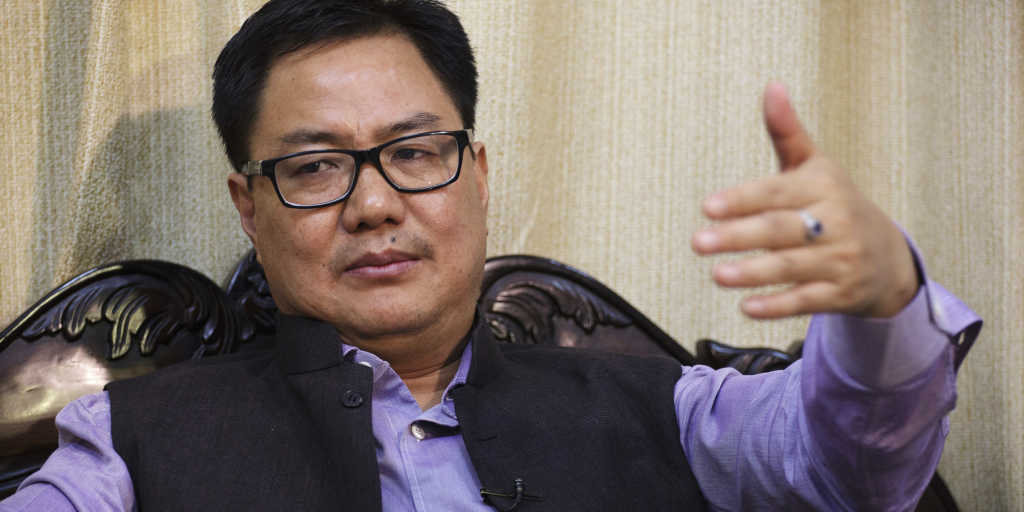Minister of State for Home Kiren Rijiju told the Lok Sabha last week: “According to UNHCR there are 13,000 Rohingya migrants registered. But we have also got figures from IB (Intelligence Bureau) which shows they have migrated to India in very large numbers. “Steps are being taken to ensure that we do not get uncontrolled influx of migrants in the country, which creates lots of social, political and cultural problems. “At the same time we want to ensure the demographic pattern of India is not disturbed”.
11 August 2017 Interior Ministry spokesman K.S. Dhatwalia said India is in talks with Bangladesh and Myanmar about its plan to deport around 40,000 Rohingya Muslims it says are living in the country illegally, he added that state governments are asked to a form task forces for the purpose.
Tens of thousands of Rohingya have fled persecution in Buddhist-majority Myanmar to neighbouring Bangladesh since the early 1990s, with some of them then crossing over a porous border into India. More than 75,000 Rohingya have fled to Bangladesh since an insurgent group called Harakah al-Yaqin, recently rebranded as the Arakan Rohingya Salvation Army, or ARSA, attacked Myanmar border police posts, prompting a huge security crackdown in which troops have been accused of murder and rape of Rohingya civilians.
A senior government official in Bangladesh, which has complained of being burdened by the heavy flow of refugees, said New Delhi was helping it solve the crisis.
The Rohingya According to the Rohingyas and some scholars, they are indigenous to Rakhine State, while other historians claim that the group represents a mixture of precolonial and colonial immigrations. The official stance of the Myanmar government, however, has been that the Rohingyas are mainly illegal immigrants who migrated into Arakan following Burmese independence in 1948 or after the Bangladesh liberation war in 1971.
Muslims have settled in Rakhine State (also known as Arakan) since the 15th century, although the number of Muslim settlers before British rule is unclear. Despite debates concerning its origins, the term “Rohingya,” in the form of Rooinga, first appeared in 1799 in an article about a language spoken by Muslims claiming to be natives of Arakan. In 1826, after the First Anglo-Burmese War, the British annexed Arakan and encouraged migrations from Bengal to work as farm laborers.
The Muslim population may have constituted 5% of Arakan’s population by 1869, although estimates for earlier years give higher numbers. Successive British censuses of 1872 and 1911 recorded an increase in Muslim population from 58,255 to 178,647 in Akyab District. During World War II, the Arakan massacres in 1942 involved communal violence between British-armed V Force Rohingya recruits and Buddhist Rakhine people and the region became increasingly ethnically polarized. After Burmese independence in 1948, the mujahideen rebellion began as a separatist movement to merge the region into the East Pakistan and continued into the 1960s, along with the Arkanese Independence Movement by Rakhine Buddhists. The rebellion left enduring mistrust and hostilities in both Muslim and Buddhist communities. In 1982, General Ne Win’s government enacted the Burmese nationality law, which denied Rohingya citizenship, rendering a majority of Rohingya population stateless. Since the 1990s, the term “Rohingya” has increased in usage among Rohingya communities.
Prior to the 2015 Rohingya refugee crisis and the military crackdown in 2016 and 2017, the Rohingya population in Myanmar was around 1.1 to 1.3 million. They reside mainly in the northern Rakhine townships, where they form 80–98% of the population. Many Rohingyas have fled to neighbouring Bangladesh, to areas along the border with Thailand, and to the Pakistani city of Karachi. More than 100,000 Rohingyas in Myanmar live in camps for internally displaced persons, not allowed by authorities to leave
In India Rohingyas live mainly in Jammu, Uttar Pradesh, Haryana and Delhi in the north, Hyderabad in the south, and Rajasthan in the west.
The Chamber of Commerce and Industry in Jammu, the winter capital of Jammu and Kashmir, India’s only Muslim-majority state, drew widespread condemnation in April when it threatened to launch an “identify and kill movement” if the government did not deport Rohingya settlers there.
New York Times and Aljazeera slammed India and tagged Indian government as Prime Minister Narendra Modi’s Hindu nationalist government and confining the immigrants in dubbed 21st-century concentration camps without considering it’s a country of 1.3 billion people are fighting for resources and job opportunities and not a signatory of UN conventions on refugees and no national law covers it.
UNHCR : Meenakshi Ganguly, Human Rights Watch’s South Asia director, slammed the plan, noting that India as a member of the UN Human Rights Council was aware of the risks Rohingya refugees will face if deported. The United Nations High Commissioner for Refugees (UNHCR) has issued identity cards to about 16,500 Rohingya in India that it says help them “prevent harassment, arbitrary arrests, detention and deportation”.
But Kirren Rijiju, said in an interview that the UNHCR registration was irrelevant. “They are doing it, we can’t stop them from registering. But we are not signatory to the accord on refugees,” he said.
“As far as we are concerned they are all illegal immigrants. While We can’t throw Rohingyas out just like that. We can’t dump them in the Bay of Bengal but They have no basis to live here. Anybody who is an illegal migrant will be deported.” Kirren Rijiju added.
Hope a peaceful solution is found out and the demography of India is not affected.
